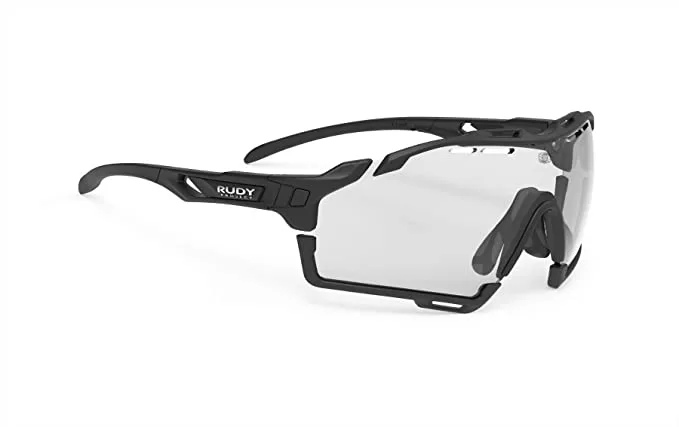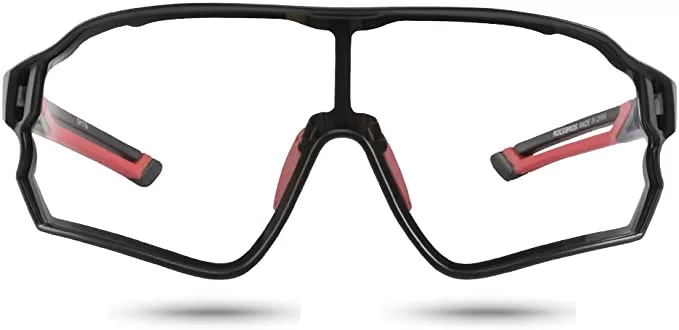When it comes to choosing cycling glasses, two popular options are photochromic lenses and polarized lenses. Both offer advantages for cycling, so which is better for mountain biking? Let’s take a closer look at each type of lens.
Wearing quality cycling glasses is important for protecting your eyes and improving vision while riding. The right glasses can shield your eyes from insects, dirt, and glare. They also provide crucial impact protection in case you crash.
For mountain biking, where you’re riding fast over bumpy and uneven terrain, having cycling glasses is especially important. The two main types of specialty lenses for cycling glasses are photochromic lenses and polarized lenses. Read on to learn more about how they compare for mountain biking and which may be the better choice for you.
Photochromic Lenses
Photochromic lenses are eyeglass lenses that automatically darken when exposed to sunlight. The lenses contain special molecules that react to UV light by changing shape and darkening. When the UV light source is removed, the lenses fade back to their clear state.
For cycling, photochromic lenses offer the versatility to adapt to changing light conditions. Mountain biking takes you through open meadows and dense forest trails. Photochromic lenses can shift from clear when under tree cover to darker when you’re out in the bright sun.
Unlike wearing sunglasses with fixed tint, you won’t have to swap out lenses as you move in and out of sunlight. Photochromic lenses make that transition automatically. This convenience is a major plus for mountain biking.
Some key benefits of photochromic lenses for cycling include:
- Automatically adapt to shifts in sunlight, from bright sun to shade
- No need to carry extra fixed-tint lenses to swap for changing light
- Provide sufficient darkness in bright sun, while staying clear under cloud cover or shade
When considering photochromic lenses, keep in mind:
- Darkening speed can vary between lens brands
- Won’t get as dark as most sunglass lenses in direct sun
- Some brands don’t work well for cycling due to slow transitions
According to experts, the best photochromic lenses for cycling react quickly to light changes and darken sufficiently in bright sun. Slow reacting lenses could leave you squinting when emerging from tree cover into sun.
Polarized Lenses
Polarized lenses are designed to reduce glare. They have a special filter that blocks light waves reflecting off surfaces like water, snow, or glass at certain angles. This can cut down on distracting reflections and make it easier to see.
Glare reduction is the main advantage of polarized lenses for cycling. Mountain bikers contend with glare from a myriad of surfaces – wet roads, slick rocks, ponds – not to mention glare off fellow cyclists’ shiny gear. Polarized lenses cut through these reflections for improved vision clarity.
Other potential benefits of polarized cycling glasses:
- Improved contrast – Boosts definition between terrain variations
- Reduce eye strain from glare
- Darker without heavier tint – Preserve visibility even in low light
Some drawbacks to consider with polarized lenses:
- Not ideal for mountain biking in dense forest – Block too much light
- Can make it harder to read digital screens and see LCD displays
- More expensive than other lens options
- The polarization itself doesn’t protect against UV light.
The glare cutting ability of polarized lenses makes them a top choice for road biking. But for mountain biking, their performance can depend on the trails. According to the experts, they work best on open, sunlit terrain.

Making the Choice
So when choosing lenses for mountain biking eyewear, should you go photochromic or polarized? Or maybe consider buying glasses with both? Or perhaps get a pair of daytime glasses and a pair of clear night cycling glasses.
The answer depends in part on where you like to ride. For mountain biking on more heavily wooded trails, photochromic lenses may be your best bet. They’ll transition from clear to dark when you pass through changing cover and sunlight.
Polarized lenses shine the most on wide open, sun-drenched mountain bike trails. By cutting glare off water and other surfaces, they can optimize clarity and reduce eye fatigue.
Ultimately, you can’t go wrong getting cycling glasses with either type of lens. They both make a huge difference compared to riding without eye protection or just in basic sunglasses.
If forced to choose just one for versatile mountain biking, photochromic lenses may have the slight edge. But polarized lenses excel in the right conditions. As long as your cycling eyewear fits comfortably and doesn’t move around, the type of performance lens is more about personal preference.
Other Lens Options
Beyond basic tinted lenses, photochromic, and polarized, there are a few other specialty lens options to consider:
- Mirrored coating – Adds a reflective surface to cut glare while maintaining tint level
- Variable tint – Similar performance to photochromic but use electrical signals to shift tint
- Contrast enhancement – Boost visual clarity and depth perception
You can also choose lenses with added protection like impact resistance, anti-fog coatings, and oleophobic (oil shedding) treatments. Make sure any performance claims are backed up by independent testing.
Lens Material
Lens material is another important choice. The highest quality cycling glasses use polycarbonate or Trivex plastic lenses. Nylon and acrylic lenses are cheaper but less impact resistant. Glass lenses are not recommended for sports eyewear due to their weight and potential to shatter.
When weighing lens choices, optical clarity and impact protection should be your top priorities. Added performance like light-adaptive tint, glare reduction, and mirror coating is secondary. Protecting your eyes should always be the number one job of cycling eyewear.
Remember that to keep cycling glasses useful and safe to wear, you need to keep them clean. It’ll make them last longer and you’ll enjoy using them more if the lenses aren’t scratched up from dirt and such.
Finding the Right Fit
Whichever lenses you prefer, make sure your cycling glasses fit comfortably and securely. They should feel stable when riding over rough terrain, not slide down your nose or move around.
Features to look for in sunglasses for mountain biking:
- Streamlined wrap-around frames with curvature to protect from peripherals
- Adjustable rubber nosepieces and temple tips to prevent slippage
- Lens shape optimized for head tilt in riding position
Properly fitted cycling glasses will stay put, provide optimal sight lines, and withstand jostling on the trail. Lens quality is important, but a poor fitting frame can undermine the benefits.

Rudy Project Cutline Clear Photochromic Glasses
Protect Your Vision
Your eyes are precious, so when riding challenging mountain bike trails, don’t take any chances. Invest in good quality sunglasses or goggles with impact resistant lenses. Make sure they fit properly and won’t shift around on bumpy rides.
For the best all around vision and protection on mountain bike trails, photochromic lenses are a great choice. But polarized lenses really shine in open, sun-drenched conditions by cutting glare.
Whichever you pick, take care of your eyes so you can keep enjoying the trails.






